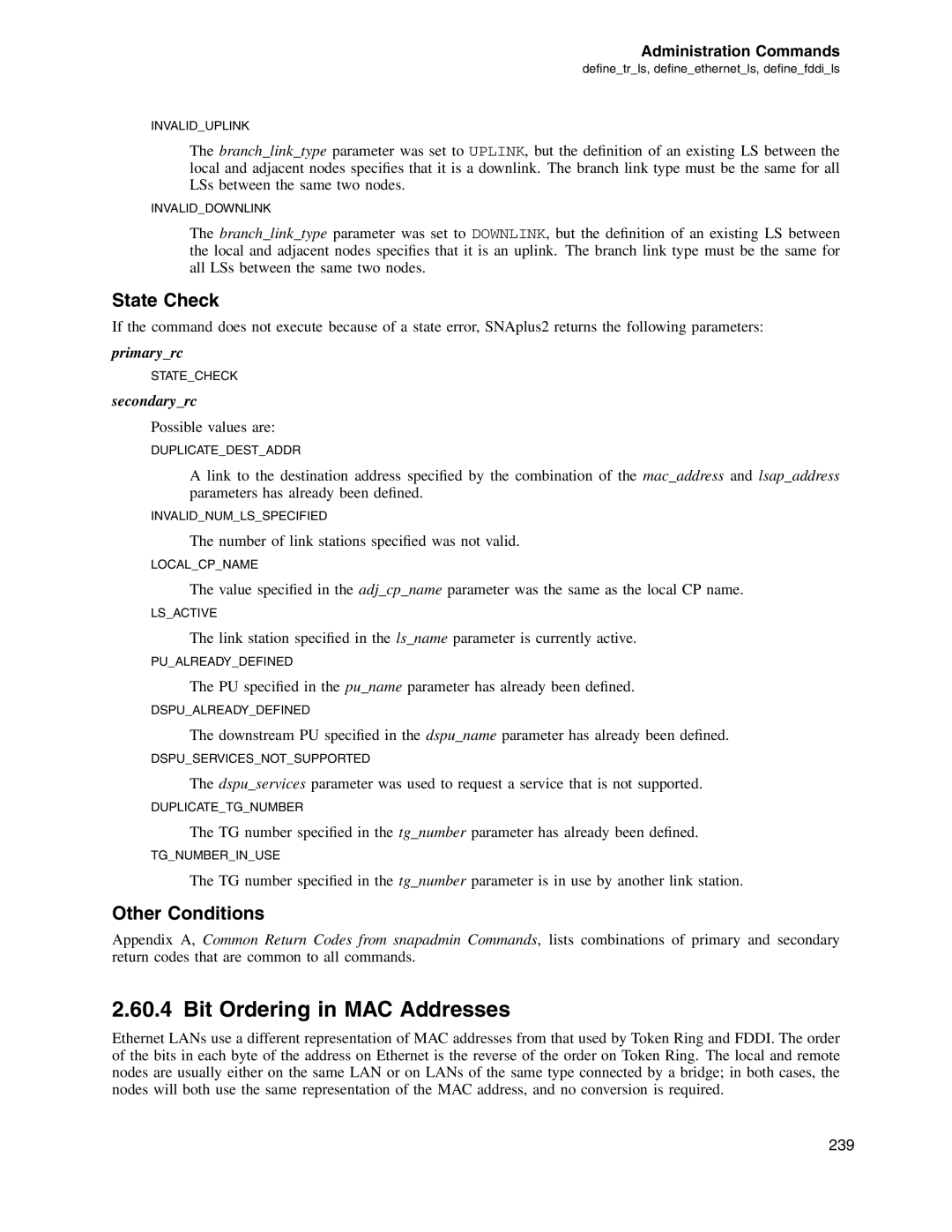Administration Commands
define_tr_ls, define_ethernet_ls, define_fddi_ls
INVALID_UPLINK
The branch_link_type parameter was set to UPLINK, but the definition of an existing LS between the local and adjacent nodes specifies that it is a downlink. The branch link type must be the same for all LSs between the same two nodes.
INVALID_DOWNLINK
The branch_link_type parameter was set to DOWNLINK, but the definition of an existing LS between the local and adjacent nodes specifies that it is an uplink. The branch link type must be the same for all LSs between the same two nodes.
State Check
If the command does not execute because of a state error, SNAplus2 returns the following parameters:
primary_rc
STATE_CHECK
secondary_rc
Possible values are:
DUPLICATE_DEST_ADDR
A link to the destination address specified by the combination of the mac_address and lsap_address parameters has already been defined.
INVALID_NUM_LS_SPECIFIED
The number of link stations specified was not valid.
LOCAL_CP_NAME
The value specified in the adj_cp_name parameter was the same as the local CP name.
LS_ACTIVE
The link station specified in the ls_name parameter is currently active.
PU_ALREADY_DEFINED
The PU specified in the pu_name parameter has already been defined.
DSPU_ALREADY_DEFINED
The downstream PU specified in the dspu_name parameter has already been defined.
DSPU_SERVICES_NOT_SUPPORTED
The dspu_services parameter was used to request a service that is not supported.
DUPLICATE_TG_NUMBER
The TG number specified in the tg_number parameter has already been defined.
TG_NUMBER_IN_USE
The TG number specified in the tg_number parameter is in use by another link station.
Other Conditions
Appendix A, Common Return Codes from snapadmin Commands, lists combinations of primary and secondary return codes that are common to all commands.
2.60.4 Bit Ordering in MAC Addresses
Ethernet LANs use a different representation of MAC addresses from that used by Token Ring and FDDI. The order of the bits in each byte of the address on Ethernet is the reverse of the order on Token Ring. The local and remote nodes are usually either on the same LAN or on LANs of the same type connected by a bridge; in both cases, the nodes will both use the same representation of the MAC address, and no conversion is required.
239
